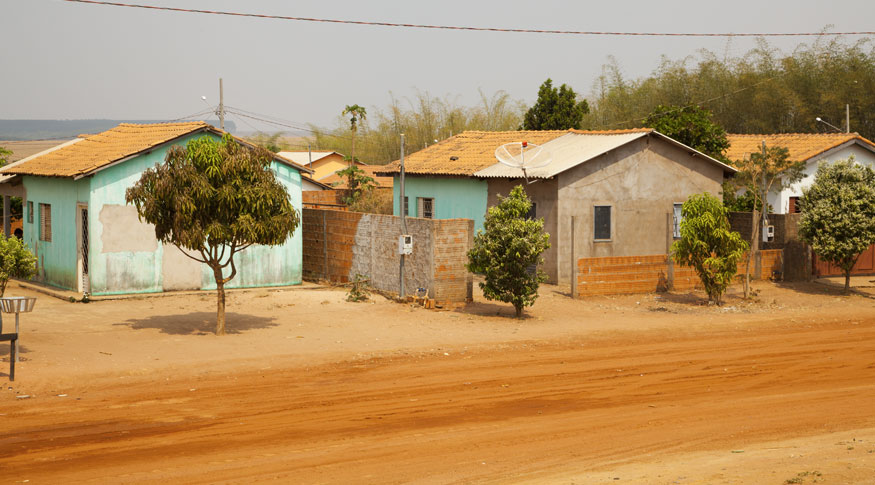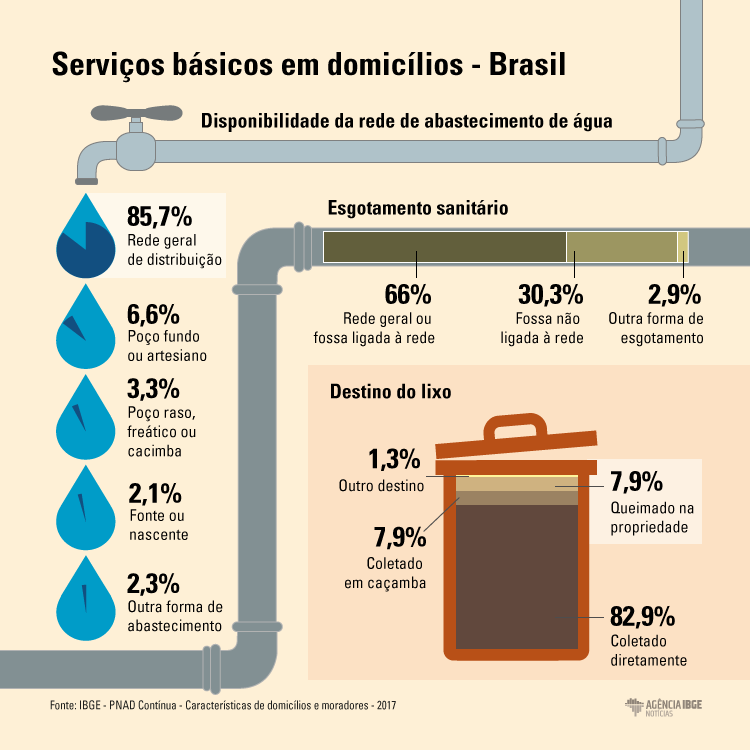Constituição Cidadã: 30 anos depois
Access to urban services not following advance of public policies of housing
November 21, 2018 10h00 AM | Last Updated: November 22, 2018 01h05 PM

Appropriate house for every Brazilian was the motivation that caused this right to be included in the Federal Constitution of 1988, which celebrated 30 years in October. The recognition leveraged policies of housing and urbanization in Brazil, though there is still a long way to go to solve the deficit of houses and the regional inequality in the access to essential household services.
Art 6 Education, health, food, labor, housing, transportation, leisure, safety, social security, protection to motherhood and childhood, assistance to the helpless are social rights in the form of this Constitution.
The pioneer spirit of the Brazilian Constitution in including housing as a right is the result of a movement known as urban reform, which dealt with this subject in a different way, as explained by Vanessa Gapriotti Nadalin, expert of planning and survey at the Institute of Applied Economic Research - Ipea: "the movement of the urban reform comes from social movements and ended up including housing as a right. Later it unfolded as the Statute of the Cities, enacted in 2001".
Housing as a right has been discussed in the United Nations - UN, receiving contributions from Brazil in international forums. "The Brazilian legislation has always been seen as a major advance. "Recently, it was tried to include the right to the city, which would provide people with the capacity to intervene in the formation of the city, to be included in the process of urban development", complements Ms. Nadalin.
In addition to the enactment of the Statute of the Cities, with rules to the urbanization policies, Brazil registered advances with housing programs and increasing access to services over the last 30 years, though in an insufficient scale.
In terms of public policies, "Minha Casa, Minha Vida " (My House, My Life) is considered a project that aims at fighting against the housing deficit, besides leveraging the sector of civil construction. "Concerning the deficit, a very big number of housing units have been built, though many of them of low quality and with a bad urban insertion, as they were far form the centers", complete Ms. Nadalin.
One of those benefited from the program, 32-year old receptionist Carla Lima, chose to finance an apartment in Santa Cruz, West Zone of Rio de Janeiro, after hearing the conditions from the construction company. "I did not enter in the bracket in which the property is granted by the public authorities. They are more distant and probably people are slightly more concerned. Sometimes one lives in a community near a shopping center and works there. It is not difficult to put your job in risk for living distant from it", reflects Ms. Lima, who said she was happy with her residence.
"I had already looked in other neighborhoods, but the cost-benefit was higher there. And we managed to streamline the process. It was quicker than I supposed", tells Ms. Lima, who lives in the new apartment for two years. "I do not have such difficulty [of access]. I chose a previously known neighborhood. There are condos of the program where I used to live, though more expensive. So, I chose a distant neighborhood, but not of difficult access", completes her.
Those who acquired their properties through the program and managed to pay the finance entered in the major group today in Brazil: 67.9% of the national housing units are own homes and already paid by one of the residents, according to the Continuous National Household Sample Survey - PNADC. "We have an indicator of quality in terms of the property. People should not be concerned where they will live later. The percentages are higher in the North and Northeast", explains Maria Lúcia Vieira, manager of the Continuous PNAD.


Even stimulating the access to the ownership of properties, there is still a long way to go in the urban insertion of these houses, and even in the quality of the residences and of the public services provided to them.
"There is a big difference among the regions. In Brazil, 85.7% have access to water through the general network. In the Northeast, this proportion falls to 59.2%. Concerning sanitary exhaustion, a matter of public health, only 66% of the Brazilian housing units are connected to the general network or to septic tanks connected to the network. In the Southeast, this proportion is 88.9%", points out Ms. Vieira. Likewise, 82.9% of the Brazilian housing units have the waste collected directly. It falls to 69.8% and 69.6% in the North and Northeast, respectively. In these regions, the proportion of housing units that burn waste in the property is higher", completes her.

The inequality in the access to the services varies from sanitation to home Internet. "In Brazil, 70.5% of the housing units have access to the Internet. Anyway, the analysis of the equipment type shows that most of them accesses it through mobile telephones (69% of the housing units). Nearly all of them have access to the Internet, the mobile Internet. Concerning the computer, which is a more expensive good, this percentage is higher in the Southeast (47%) and South (46%). In the North (21%) and Northeast (25.9%), it becomes scarce", analyses the manager of the Continuous PNAD.
According to Ms. Nadalin, it is clear that the public programs evolved over the last decades, though they were not designed and implemented to fully respect the right of a house of good quality.
"In practice, major investments made the difference, though not always matching those rights, like Minha Casa, the urbanization of slums and works of urban mobility. Even so, it is still difficult for the municipalities to incorporate the Statute of the Cities and implement objective mechanisms to ensure such rights. The right is clear, but how to do it, not yet", completes the Ipea researcher.


















